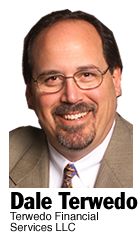 |
|
|
YOUR
COUNTY.
|
YOUR
BUSINESS JOURNAL.
|
Home
About SCBJ
Subscribe
Contact Us
Archives
Advertising Information
Editorial
Calendar
Site Map
Taxes
and investing:
from capital gains to IRAs
 This
is the time of the year that the Tax Man cometh. There have been many
changes to the tax laws in recent years, something that has become the
norm.
This
is the time of the year that the Tax Man cometh. There have been many
changes to the tax laws in recent years, something that has become the
norm.
One such change has been the capital gains and dividend tax rates. The 15 percent maximum capital gain and dividend rate recently was upheld until the year 2010. This is significant because, often, portfolios get “out of whack” as investors do not want to incur the tax hit of diversifying. As a result, their portfolios often become overweighted or overconcentrated, thereby increasing risk.
However, when the tax rate is at such a compelling and low rate, it may be prudent to consider diversifying those positions that are overconcentrated. Any capital asset can create the overconcentration scenario. This includes, but is not limited to, the gold you bought for Y2K, real estate, stocks or bonds.
While you often can have an impact on the capital gains you receive, sometimes you cannot; corporate actions or other unplanned-for declarations of gain can impact your tax return without your control. Unplanned, but distributed, gains become taxable as if you had sold the asset yourself. Sometimes, this can be a surprise at the end of the year. Your tax preparer needs this information to complete your tax return.
Whatever investments you are using, you’ll want to consider the “tax efficiency” of the asset you’ve chosen. It, in effect, measures the percentage of the return that you realize after the tax impact of the asset.
An asset that is 100 percent efficient does not lose any return to tax impact in the year measured. It would be very difficult to have an asset that never has a tax impact and, therefore, a 100 percent rating at all times. Movements inside the portfolio, whether they are redemptions, realignments or simply looking for better opportunities by the portfolio manager, create tax implications. Tax-managed investments attempt to offset the impact by methods such as tax loss harvesting.
“The tax treatment of capital gains is treated separately from other income,” says David Amundson, CPA of Amundson and Co. Inc. PS in Everett. “That is, unless the tax rate would be lower than 15 percent.”
He cautions that alternative minimum tax could have an indirect impact.
Various tax-planning concepts are available to you in your own investments and are not limited to stocks and bonds. Any capital asset has its own tax impact, some better than others.
Amundson offers this example: “If you sell your primary residence that has a gain associated with it, you have the ability to keep the profit up to $500,000 (if married filing a joint return), without paying capital gains taxes.”
He cautions that “if you converted that same house to a rental and then sold it, the tax exemption no longer applies.”
In case you need to do some last-minute planning for tax year 2006, you may want to consider a SEP if you are a business owner and an IRA contribution as an individual. Both of these plans can accept contributions after yearend for the 2006 tax year through April 15.
The SEP has contribution limits of 25 percent of income up to a maximum contribution of $44,000, and the IRA limits are $4,000. Higher limits apply if you are over 50.
Future planning could include SIMPLE IRA, Individual 401(k), Regular 401(k) and the Roth component to the Regular 401(k).
A substantial benefit to the Roth 401(k) is the unlimited nature of the income limitation. A contribution to a regular Roth IRA contribution is limited above certain adjusted gross income levels, but not in the Roth 401(k).
Whatever provider you choose for these plans, be comfortable with the level of diversity the provider can bring to the table.
Whatever your tax planning needs are, Amundson offers this advice: “While you are together for the purpose of your tax return, decide if you need to set aside an appointment in the summer for the future tax-planning conversation.”
This is a good time to bring your financial planner, investment adviser and tax professional together.
Amundson encourages you to visit his Web site, www.acicpa.com. He has tons of useful information, tax news, calculators and more. The direct link for a free tax organizer is at www.acicpa.com/taxorganizer.html. Otherwise, he can be reached in Everett at 425-258-1978.
This article is not intended to provide tax or legal advice. You should consult your own advisers prior to making decisions that will impact your situation.
Dale Terwedo, certified as a CFP, ChFC and CLU, is principal of Terwedo Financial Services LLC in Edmonds. For more information, send e-mail to retire@tfsadvisors.com or call 425-776-0446.
 |
![]()
Business
Resources
Service
Directory
Heraldnet
The
Enterprise
Traffic
Update
Government/Biz Groups
